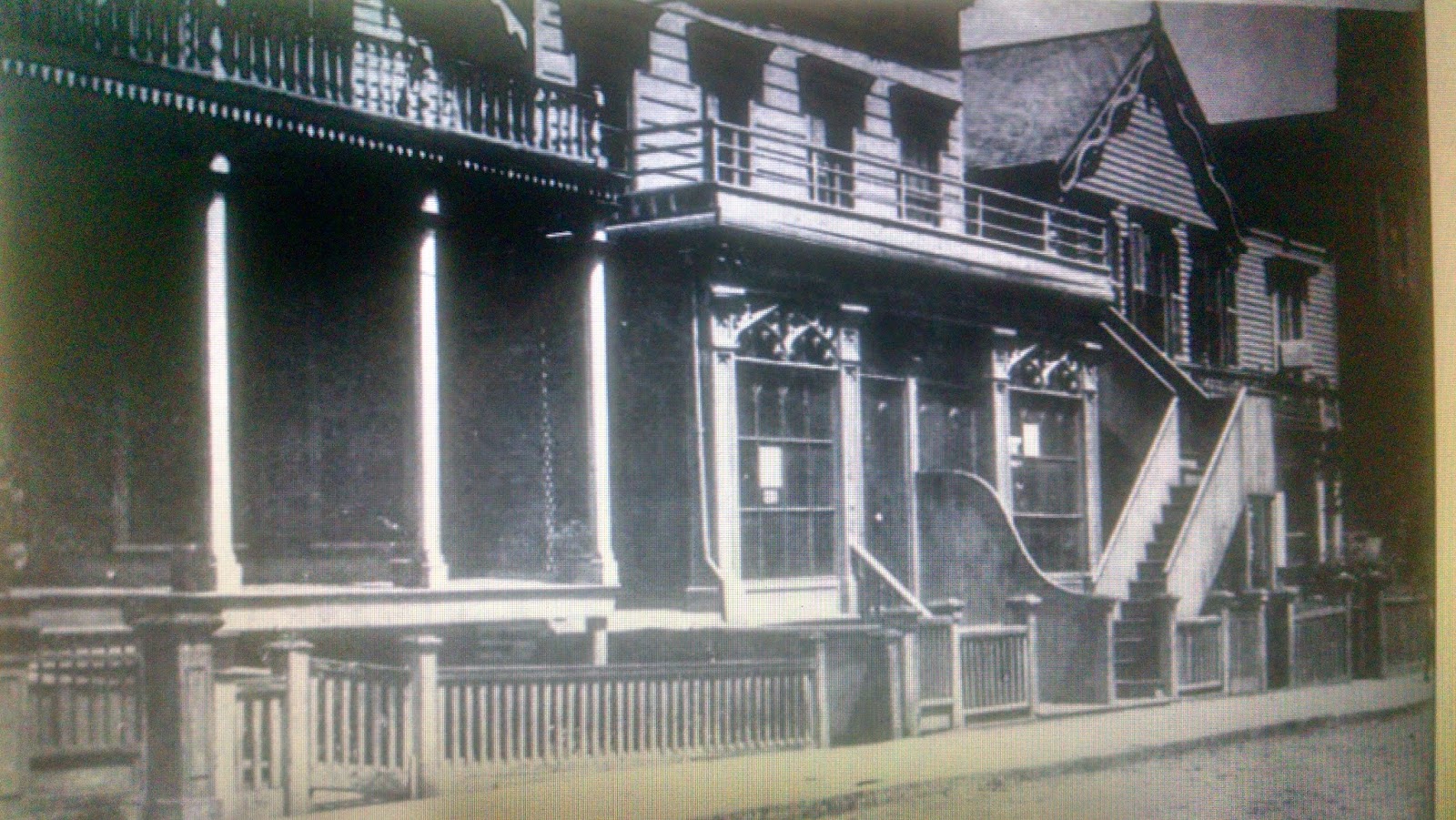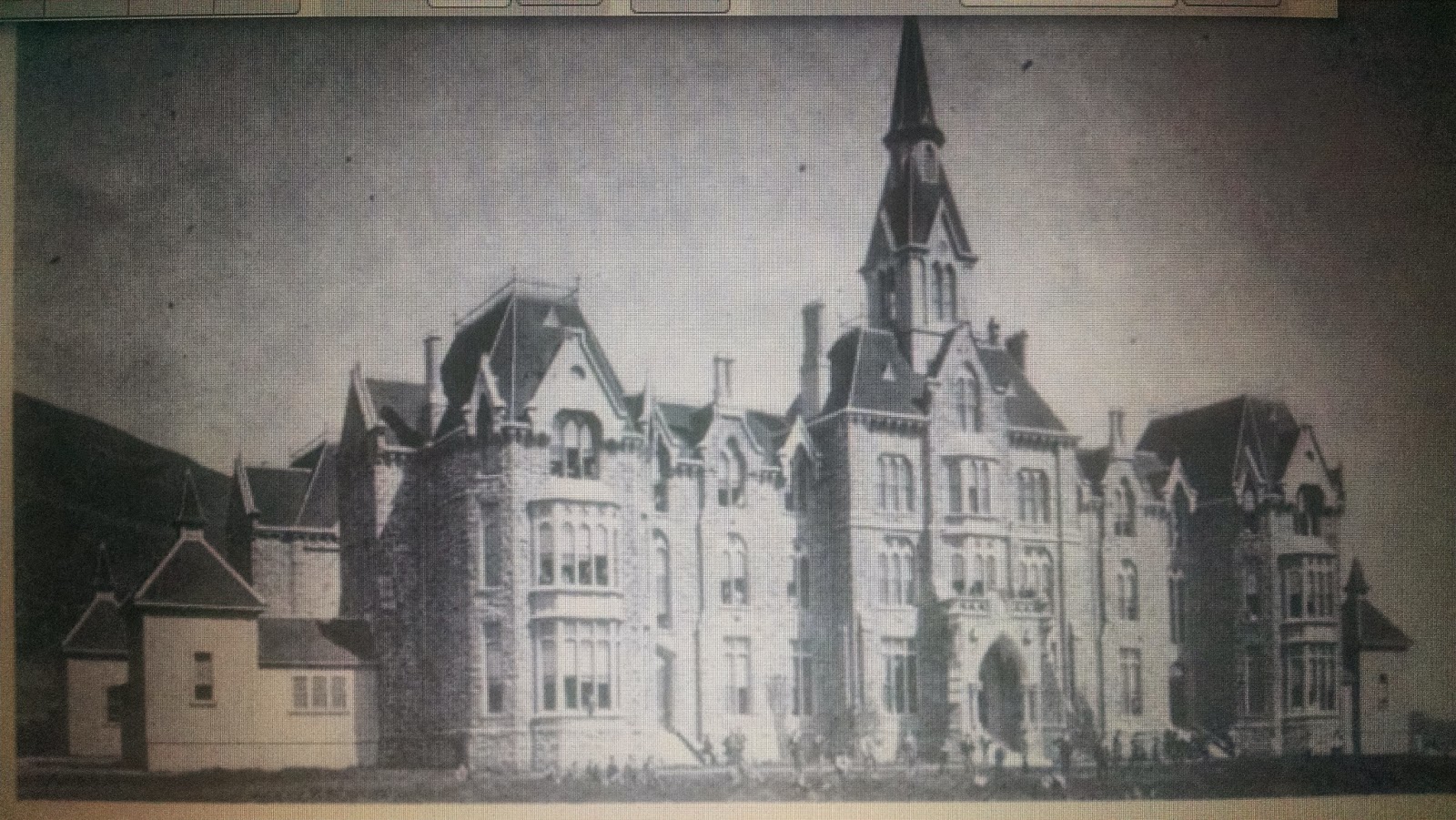The school came about because of a group of twenty-three ladies who met together on March 17, 1860, to form the Society for the Instruction and Maintenance of the Deaf and Dumb, and of the Blind. Mrs. Pomeroy B. Clark is credited with leading the movement, and the Society set in motion the creation of the California School for the Deaf.
 |
| The Tehama Street School--second house from the left |
Mrs. Clark, mentioned above, was named principal of the school in 1860. The first teacher was a deaf man, Mr. H. B. Crandall, who had graduated from the New York Institution. On the day they opened, they had three students—a boy and two girls. Within six months, their student body had swelled to sixteen students, leaving their current quarters cramped. The Board of Managers did extensive fundraising and received generous support by private donors. Through these fundraising efforts, they were able to secure land on which a permanent school building was built, allowing for larger student numbers. In 1862, the number of enrolled students was twenty, and it grew to thirty the year after. However, there were somewhere around 150-180 deaf children of school age in the early 1860s, and space for only thirty or so in the California School for the Deaf.
 |
| The original Berkeley location |
 |
| The view looking down on the back side of the Berkeley location |
It’s your turn. What cause are you passionate about? Have you thought of ways you can make a difference in this area, just as the twenty-three women did for deaf children in California?
Jennifer Uhlarik discovered the western genre as a pre-teen, when she swiped the only “horse” book on her older brother’s bookshelf. A new love was born. Across the next decade, she devoured Louis L’Amour westerns and fell in love with the genre. In college at the University of Tampa, she began penning her own story of the Old West. Armed with a B.A. in writing, she has won five writing competitions and finaled in two others. In addition to writing, she has held jobs as a private business owner, a schoolteacher, a marketing director, and her favorite—a full-time homemaker. Jennifer is active in American Christian Fiction Writers and lifetime member of the Florida Writers Association. She lives near Tampa, Florida, with her husband, teenaged son, and five fur children.



I have been to the California School for the Deaf in Riverside, California. I was a stage manager for Quiet Zone Theater and we performed at CSDR one year. It was awesome as the floor in the gym was on rollers or something similar and as the music played it vibrated the floor so the deaf could feel the music.
ReplyDeleteThank you for your blog today.
Smiles & Blessings,
Cindy W.
countrybear52 AT yahoo DOT com
Oh, what a fascinating experience that must have been, Cindy! Thank you so much for stopping by and sharing your memory with us.
DeleteThank you for this interesting post!
ReplyDeleteThanks for stopping by, Melanie! Glad you enjoyed it. :)
DeleteWow! I'm a native Californian who lived not far from Fremont back in my twenties, and yet I'd never heard of this school. Thanks for the informative post, Jennifer. I love learning more about my beloved Golden State.
ReplyDeleteWe lived in Fremont and walked by the deaf school on our way to the park. The beeping crosswalks were always interesting to our boys. Our son and wife are adopting a deaf child from India. He'll be here before Thanksgiving! sm wileygreen1(at)yahoo(dot)com
ReplyDeleteJennifer I would like to know who is the photograph credit for the Tehama School shown on this page please? I would like to ask credit permission to use. Thank you!
ReplyDeleteHi Jennifer! I came across this post just now and want to thank you for shedding the light on early history. Small correction - It's Fremont not Freement. After transferring to this school in 1968, I found that there were more deaf teachers than CSDR where I came from and they made an impact on me as a deaf person. Eventually after graduation, I became friends with the former teachers who shared stories not told in public. Oh, I could tell stories enough to fill a book!
ReplyDelete